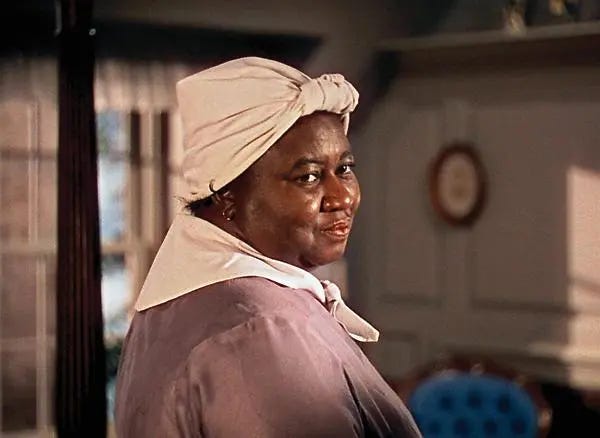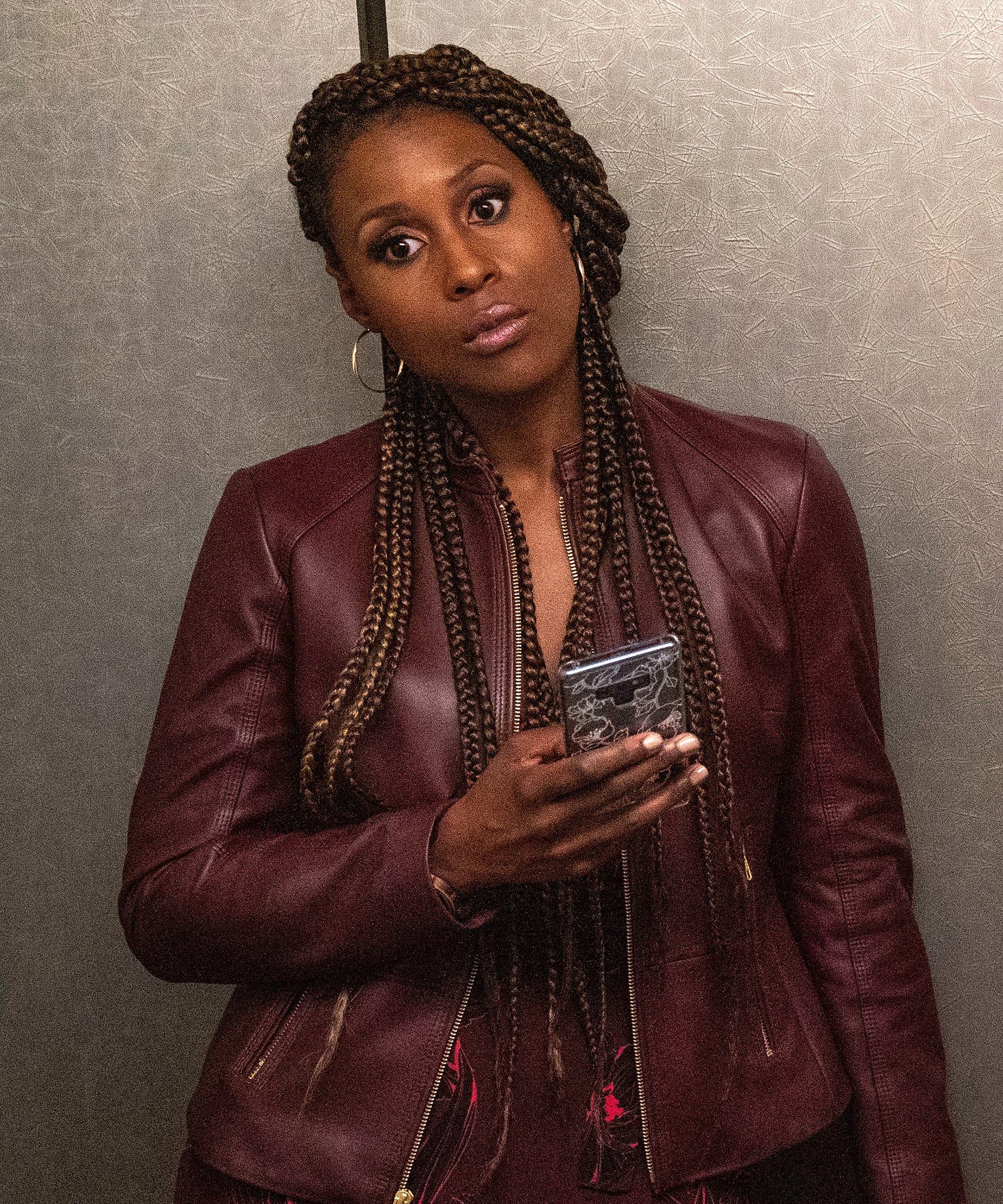Beyond Madea & Molly: Unmasking the Stereotypes in Black Women's Portrayals
The Representation Paradox in Contemporary Black Cinema
INTRODUCING A NEW CRITICAL VOICE
[Editor's Note] When Naomi Kimora Castang's research and article crossed my desk last month, I knew immediately it belonged in Cognitive Frames. This Valley Stream High School student takes a refreshingly empirical approach to analyzing Black female representation in cinema, meticulously tracking stereotype patterns across Tyler Perry and Issa Rae's films.
The results will likely surprise you.
What makes Castang's work exceptional is her "data journalism" methodology—transforming subjective impression into quantifiable observation.
At the Cognitive Film Society, we're committed to building a community that develops visual literacy through intensive watching rather than recycling conventional wisdom. Featuring talented local voices like Castang's is central to our mission.
We welcome submissions from other writers in our Long Island community and beyond. If you have film analysis that challenges conventional thinking through careful observation, please send it to dhesney@cognitivefilms.org.
— Doug Hesney
When we discuss representation of Black women in American cinema, an almost reflexive narrative emerges: Tyler Perry's films traffic in broad caricatures rooted in historical stereotypes, while Issa Rae's work offers more nuanced, authentic portrayals that subvert these problematic tropes.
This ready-made narrative satisfies our desire for clear progress in media representation. But what if the actual patterns of representation are more complex—and perhaps more troubling?
A rigorous content analysis comparing Black female characters in films by both creators reveals something unexpected: Tyler Perry's characters don't actually embody stereotypes more frequently than Issa Rae's—they simply embody them differently.
While Perry's characters often display a wider range within stereotypical categories, with some characters strongly embodying a single stereotype, Rae's characters more consistently blend aspects of multiple stereotypes in ways that may ultimately reinforce rather than challenge these problematic representations.
This dialectical tension—between our expectations and the empirical reality—invites us to reconsider how stereotypes persist in contemporary media, even when creators actively attempt to challenge them.
The Historical Shadow: Three Tropes with Antebellum Origins
To understand modern Black female representation in film, we must first recognize the historical archetypes that continue to shape American visual media. Three predominant stereotypes emerged during the antebellum era and have persisted through minstrel shows, early cinema, and into present-day film:
The Mammy: Characterized by selflessness, maternal nurturing, and desexualization, the Mammy exists primarily to care for others while neglecting her own needs. Visually coded through specific markers—larger body, head coverings, positioning within domestic spaces—this figure represents a "safe" Black femininity that maintains rather than challenges racial hierarchies.
The Sapphire: Defined by anger, combativeness, and emasculating behavior, particularly toward Black men. With exaggerated expressions of rage and aggressive verbal patterns, this stereotype transforms legitimate Black female anger into irrational hostility, undermining both Black women and men.
The Jezebel: Portrayed as hypersexualized and manipulative, using sexuality for personal gain. Visually coded through revealing clothing and camera techniques that emphasize the body, this stereotype has roots in the sexual exploitation of enslaved women, justified through depicting them as inherently promiscuous.
These aren't merely outdated media constructs—they reflect and reinforce power structures that legitimized the exploitation of Black women's bodies, labor, and humanity. Their persistence in contemporary media reveals how visual language carries historical weight even when creators attempt to move beyond stereotypes.
Evolution of Archetypes




The Data Speaks Louder Than Assumptions
Using a content analysis framework adapted from McKoy's research on media stereotypes, we can systematically track behaviors and characteristics associated with each trope across five films: Tyler Perry's Madea Goes to Jail (2009) and Why Did I Get Married? (2007), alongside Issa Rae's The Lovebirds (2020), Little (2019), and The Hate U Give (2018).
The raw data challenges conventional assumptions about representation in these filmmakers' work:
Raw Trope Counts
Tyler Perry films:
Mammy traits: 60
Jezebel traits: 65
Sapphire traits: 93
Issa Rae films:
Mammy traits: 50
Jezebel traits: 51
Sapphire traits: 84
"Tyler Perry's characters don't actually embody stereotypes more frequently than Issa Rae's—they simply embody them differently."
Key Finding: While Perry's films show slightly higher total stereotype counts, the real difference lies in distribution. Perry creates characters who strongly embody a single stereotype (particularly Madea as a Mammy/Sapphire figure), while Rae's characters more consistently blend aspects of all three stereotypes.

When Stereotypes Collide
When we examine how these tropes relate to one another, clear patterns emerge:
The Mammy and Sapphire Connection: These traits frequently appear together in the same character (positive moderate correlation—meaning these traits often appear together). When a character displays nurturing, caretaking behaviors, she's also likely to exhibit anger and assertiveness. This reflects the "tough love" maternal figure who both cares for and disciplines those around her.
The Sapphire and Jezebel Pairing: These traits almost always appear together in characters (strong positive correlation—meaning they're nearly inseparable). Characters portrayed as angry are also frequently hypersexualized, creating a troubling pattern where Black female anger is entangled with sexuality.
The Mammy-Jezebel Divide: These traits rarely appear together in the same character (negligible correlation). They represent opposite poles of Black female representation—the desexualized maternal figure versus the hypersexualized temptress—with characters typically embodying one or the other, but rarely both.
These patterns appear consistently across both filmmakers' work, suggesting the deep entrenchment of these stereotypical relationships in our visual and narrative language.
In this compilation of clips, notice how Madea's violence is always framed as protective, fusing Mammy and Sapphire archetypes
The Comfort of Categories
The study's findings resist easy conclusions about which filmmaker better serves Black female representation. Instead, they reveal how stereotypes operate as a complex system that shapes characterization even when creators actively attempt to subvert them.

Issa Rae in "The Lovebirds" (2020). Her character balances professional competence with emotional expressiveness that occasionally echoes Sapphire tropes, demonstrating how contemporary characterization navigates historical stereotypes even while attempting to create more authentic representations.
The Madea character in Perry's films embodies many Mammy characteristics (caretaking, disciplining children, giving advice) while simultaneously displaying Sapphire traits (anger, violence). Rather than representing a simple stereotype, Madea operates at the intersection of multiple historical tropes, creating a complex, if sometimes problematic, character.
Similarly, Issa Rae's character in The Lovebirds balances professional competence with moments of emotional volatility that echo Sapphire stereotypes, while her romantic narrative touches on complex dynamics around Black female sexuality.
These character constructions suggest that contemporary filmmakers aren't simply reproducing or rejecting stereotypes wholesale, but negotiating with their persistent influence while attempting to create more authentic representations.
"Contemporary Black female representation in American cinema continues to navigate within historically determined parameters."
The Implications: Recognizing Stereotype Persistence
Contrary to initial expectations, this analysis finds that Tyler Perry's films are not disproportionately stereotypical when compared to Issa Rae's productions. As the author concludes, "Tyler Perry movies are not stereotypical because they do not portray the Mammy, Jezebel, and Sapphire tropes more than the other movies did."
However, the prevalence of these tropes across both filmmakers' work reveals how deeply entrenched these stereotypes remain in our visual language.
The key difference lies not in frequency but in configuration: "Tyler Perry movies are more likely to have characters that strongly demonstrate one specific media trope. Issa Rae however had characters that had traits from each of the three tropes."
This suggests that contemporary Black female representation in American cinema continues to navigate within historically determined parameters, even as creators attempt to craft more authentic portrayals. The challenge isn't simply avoiding stereotypical elements, but recognizing how these elements interact in complex ways that may reinforce problematic patterns even in supposedly progressive productions.
Moving Beyond Binaries: Toward Media Literacy
For media literacy purposes, these findings offer valuable insight into how stereotypes function in contemporary film. By analyzing how these historical tropes persist and interact, studies like this contribute to the broader discussion of representation and its real-world implications.
The research demonstrates that simply categorizing representations as "good" or "bad" fails to capture the complexity of how stereotypes operate. Instead, viewers benefit from understanding the historical context of these representations and developing tools to recognize how they persist in modified forms.
Rather than asking which filmmaker better represents Black women, we might instead consider how both navigate within a visual language deeply shaped by historical stereotypes, and how we as viewers can engage more critically with these representations.
This approach moves beyond simplistic judgment to foster more sophisticated media literacy—recognizing not just the presence of stereotypes, but the subtle ways they interact, evolve, and persist even in works that consciously attempt to challenge them.
The real work begins when we stop asking who's doing representation 'right' and start asking why these patterns persist at all.
Where to Watch
Tyler Perry Films:
Madea Goes to Jail (2009): Available to rent on Amazon Prime, Apple TV+
Issa Rae Films:
The Hate U Give (2018): Available to rent on Amazon Prime, Apple TV+
This essay is based on research by Naomi Kimora Castang (AP Research: Valley Stream High School, 2025), which analyzed representations of Black women in contemporary American cinema through the lens of historical stereotypes.



